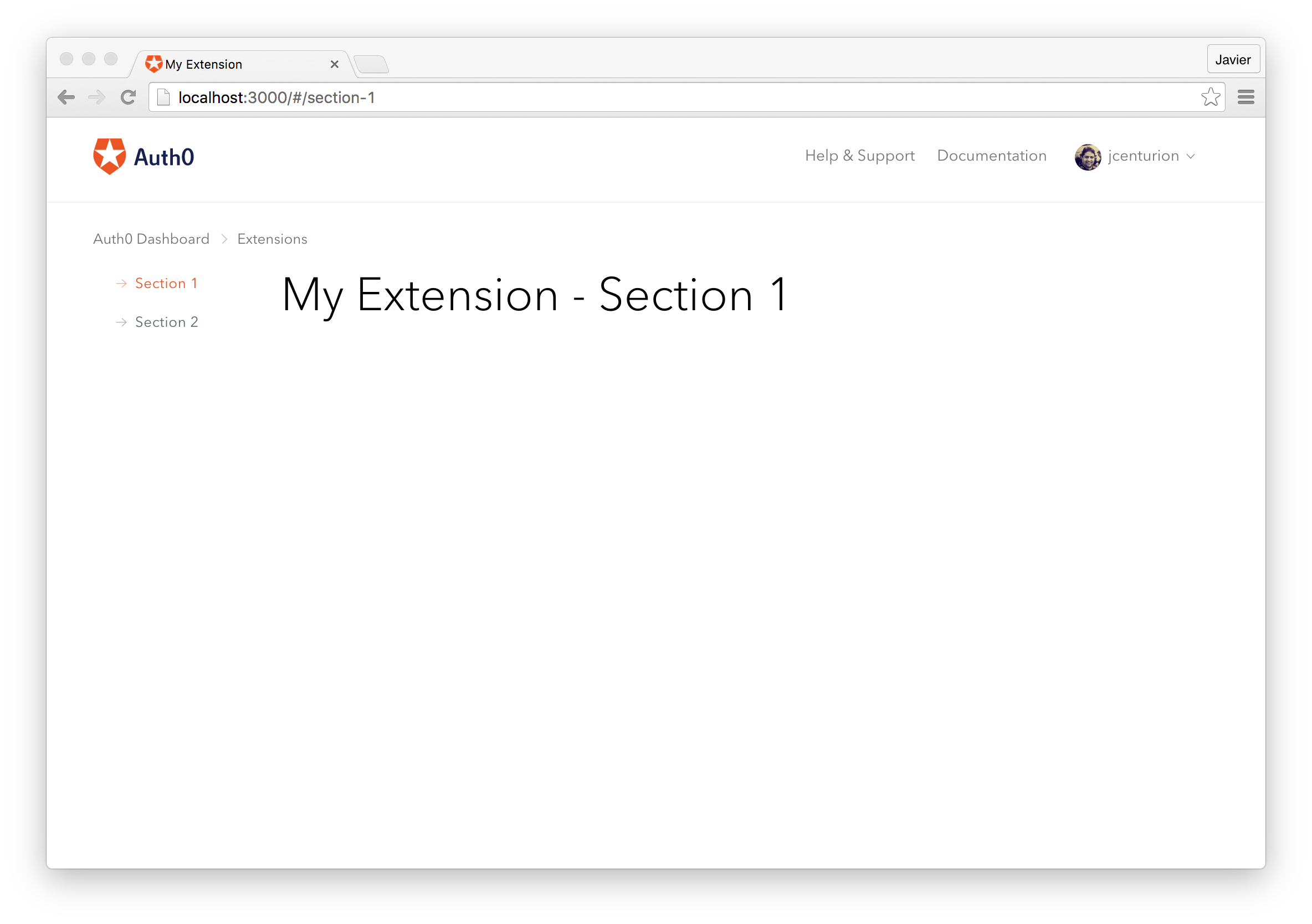- Install project dependencies
npm install - Install Webpack -
npm install webpack -g - Then run
npm startand navigate to http://localhost:3000
By default there are two templates layout.jade and index.jade which will help you to start working with an extension.
The file contains the styles of an Auth0 extension and also you can add the link to the js/css libraries you want to use.
This is the file which contains your code.
To support sections you have to address the following steps:
- Add the following lines to
layout.jade
script(type='text/javascript', src='https://npmcdn.com/react-router/umd/ReactRouter.min.js')
script(type='text/javascript', src='https://npmcdn.com/history/umd/History.min.js')- Replace
section.content-page.currenton./templates/layout.jadewith the following code:
section.content-page.current
.col-xs-12
.row
.col-xs-12.content-header
ol.breadcrumb
li
a(href='http://manage.auth0.com/') Auth0 Dashboard
li
a(href='#') Extensions
#sidebar.col-xs-2
.sidebar-fixed
ul
li.active
a(href='/#/section-1')
i.icon.icon-budicon-519
span Section 1
#extension
block content - Replace the
Extensioncomponent bySection1component on./templates/index.jade
var Section1 = React.createClass({
render: function() {
return (
<div className="content-wrapper">
<div className="content-header">
<h1>My Extension - Section 1</h1>
</div>
</div>
);
}
});- Remove the following lines from
./templates/index.jade
ReactDOM.render(
<Extension />,
document.getElementById('extension')
);- Add router configuration on
./templates/index.jade
var Router = ReactRouter.Router;
var Route = ReactRouter.Route;
var history = History.createHashHistory({queryKey: false});
ReactDOM.render((
<Router history={history}>
<Route path="/section-1" component={Section1}></Route>
<Route path="*" component={Section1}/>
</Router>
), document.getElementById('extension'));5 Enjoy!
To run the sample extension locally:
$ npm install
$ npm start- Go to Auth0 Extensions
- Click on
+ Create Extension - Fill in the textbox with
https://github.com/auth0/auth0-extension-boilerplate - Click on
continue - Finally, click on
install
Auth0 helps you to:
- Add authentication with multiple authentication sources, either social like Google, Facebook, Microsoft Account, LinkedIn, GitHub, Twitter, Box, Salesforce, amont others, or enterprise identity systems like Windows Azure AD, Google Apps, Active Directory, ADFS or any SAML Identity Provider.
- Add authentication through more traditional username/password databases.
- Add support for linking different user accounts with the same user.
- Support for generating signed Json Web Tokens to call your APIs and flow the user identity securely.
- Analytics of how, when and where users are logging in.
- Pull data from other sources and add it to the user profile, through JavaScript rules.
- Go to Auth0 and click Sign Up.
- Use Google, GitHub or Microsoft Account to login.
If you have found a bug or if you have a feature request, please report them at this repository issues section. Please do not report security vulnerabilities on the public GitHub issue tracker. The Responsible Disclosure Program details the procedure for disclosing security issues.
This project is licensed under the MIT license. See the LICENSE file for more info.

